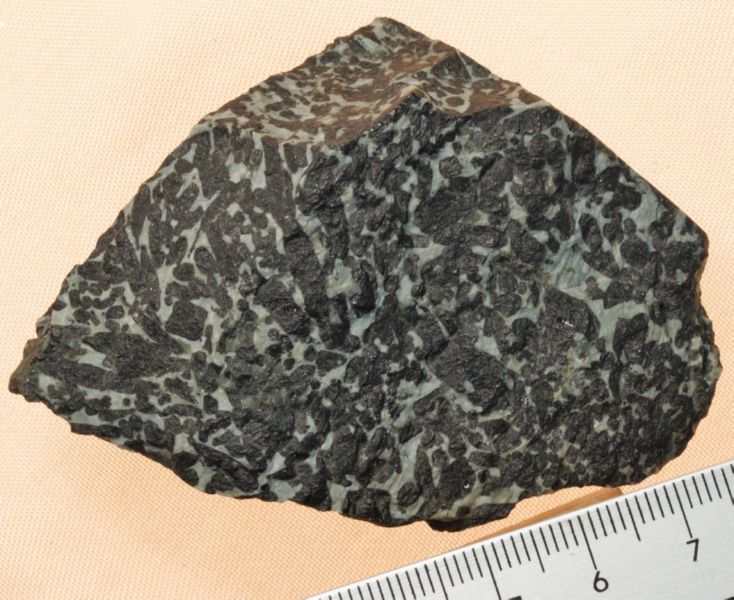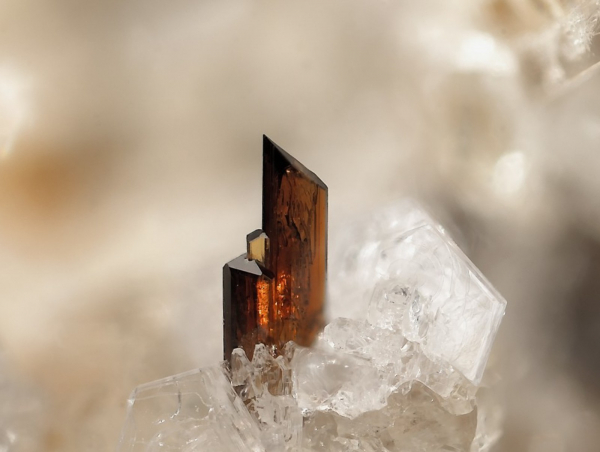Caspar quarry, Bellerberg volcano, Ettringen, Mayen, Eifel Volcanic Fields, Germany
X Y Z2 O6
Pyroxenes can be subdivided in two groups on the basis of their symmetry: orthopyroxenes (orthorhombic) and clinopyroxenes (monoclinic). The former are virtually Ca-free pyroxenes, and X and Y are mainly Mg and Fe, being a series between enstatite, Mg2Si2O6 and ferrosilite, Fe2Si2O6. In clinopyroxene, X is Ca or Na, whereas Y can be Mg (e.g., diopside, CaMgSi2O6), Fe (e.g., hedenbergite, CaFeSi2O6), or Al (e.g., aegirine, NaFe3+Si2O6; jadeite, NaAlSi2O6).Crystal System: orthorhombic/monoclinic
Colour: white, yellowish green, brown, greenish white or grey or olive-green
Lustre: vitreous, dull, silky
Habitus: prismatic
Hardness: 5-6
Fracture: irregular/uneven, conchoidal or sub-conchoidal
Cleavage: distinct/good on {110}
Density: 3,189 – 3,31 g/cm3
Origin and geological occurrence: they are common minerals from magmatic, metamorphic and meteoritic rocks.
www.mindat.org
Samples:
 |
9D.6 Pyroxene Subhedral black pyroxene prismatic crystals with plagioclase and minor spinel. Pianesola, La Spezia, Liguria. #inosilicates |

